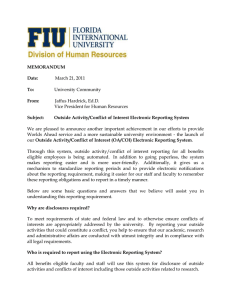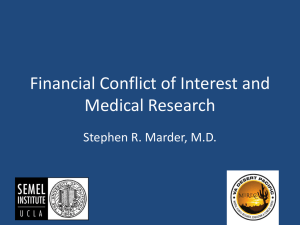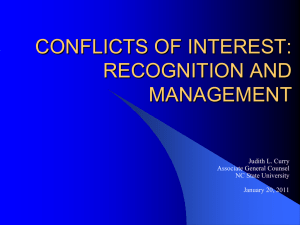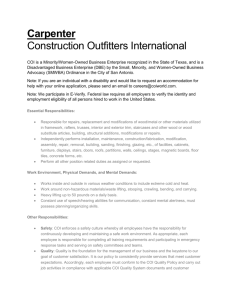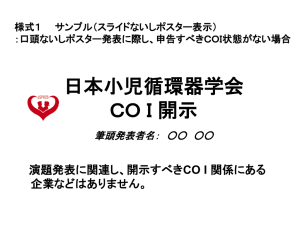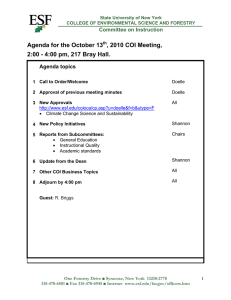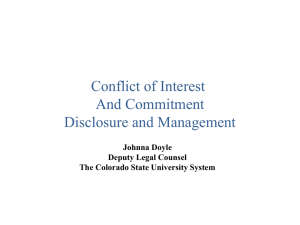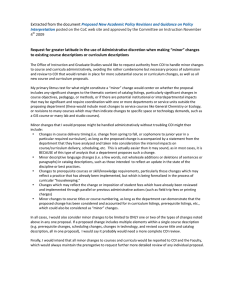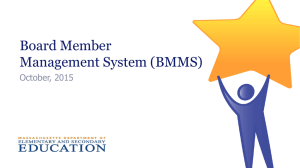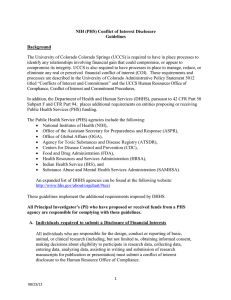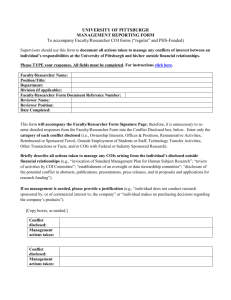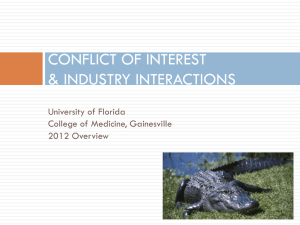Conflicts of Interest Presentation
advertisement
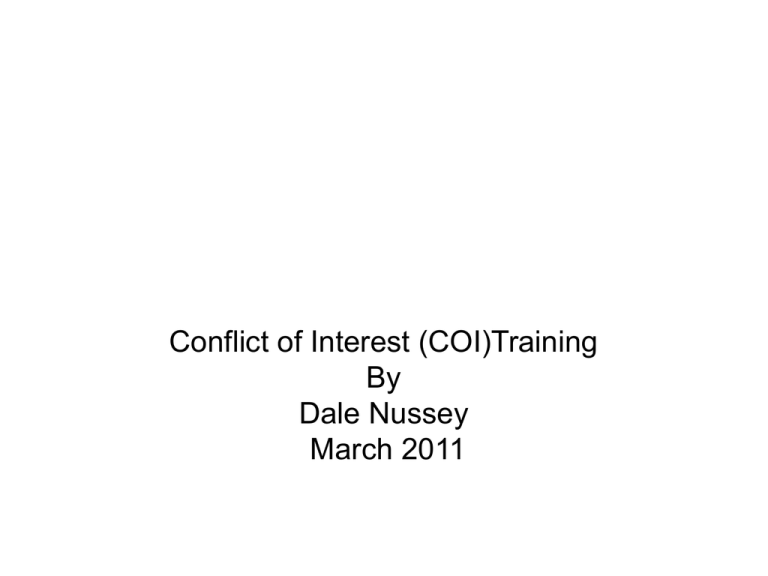
Conflict of Interest (COI)Training By Dale Nussey March 2011 AGENDA • • • • • • • • Background FAIS General Code of Conduct Amendments to the Code COI definition Principle Disclosure COI management policy Conclusion & questions Background • • • • Industry practices Examples Principles vs rules – based approach International trend – UK & Australia FAIS General Code of Conduct • • • • Section 3 requirements Disclosure of personal interests Actual or potential conflicts Fair treatment of clients (consumer protection) • Non – cash incentives/indirect consideration • Advance knowledge Code amended • • • • • • • BN 58 of 2010 – 19 April 2010 A number of definitions inserted “associate” “conflict of interest” “immaterial financial interest” “ownership interest” “subsidiary” etc. Principle • Avoid conflicts of interest • Where avoidance is not possible, mitigate the conflict • Principle of disclosure of the conflict in writing • “product providers may not give and FSPs and Representatives may not receive” anything over that what is allowed Disclosure • Disclosure to clients at the earliest reasonable opportunity: • Measures taken to avoid or mitigate conflict • Any ownership or financial interest • Nature of any relationship or arrangement with a 3rd party • Inform clients of the Conflict of Interest Policy COI Management Policy • Restrictions on the offering of financial interests to representatives (preference to quantity, product provider or specific product) • Conflict of Interest Management Policy • See the 1st draft • Discussion around first draft • Additions Disclosure of existing Conflicts • Avoidance/mitigation of the conflict • Disclosure of ownership/financial interest • Immaterial financial interest – R1 000 pa in the aggregate per Representative • Nature of any relationship or arrangement with a 3rd party giving rise to a conflict in sufficient detail to allow the client to make an informed decision Permitted financial interests • Commission as regulated • Fees as agreed with client who can stop • A financial interest paid for at fair value at the time of receipt • An immaterial financial interest (R1 000 per annum per individual) • Fees/remuneration for rendering a service to a 3rd party, being reasonably commensurate with the service being rendered What is a financial interest? • • • • • • • • Incentive Cash or cash equivalent Discount Domestic or foreign travel Gift or voucher Service or benefit Hospitality and accommodation Sponsorship What is a financial interest cont/ • Training (allowed but not for an exclusive group) • Advantage • Technology of a 3rd party necessary for the rendering of a financial service • Conflicts of Interest Registers to be maintained and monitored • CO to advise FSB in Annual Report Restrictions on financial interests to Representative • A Provider may not offer any financial interest to it’s Reps for: • Quantity of business to the exclusion of quality. (not about the volume) • If more than one product supplier can be recommended, there may be no reward for preference • If more than one product, no reward for preference of a specific product Conflict of Management Policy • In order to avoid and where this is not possible, mitigate any conflict of interest, the FSP must ensure that adequate procedures are in place for the management of conflicts of interests that may arise wholly or partially, in relation to the provision of any financial services to clients as part of the financial services business of the FSP Conflict of Management Policy • A COI Policy must be formulated, implemented and maintained which complies with the provisions of the Act • And must provide for the management of conflicts of interest. • Provide mechanisms for the identification of COI • Measures for the avoidance of COI • Where avoidance is not possible, the reasons therefore and the mitigation of such conflicts, COI Management Policy • Measures for the disclosure of COI • Processes, procedures and internal controls to facilitate compliance with policy • Consequences of non – compliance with the policy by employees and representatives Conclusion •Questions
